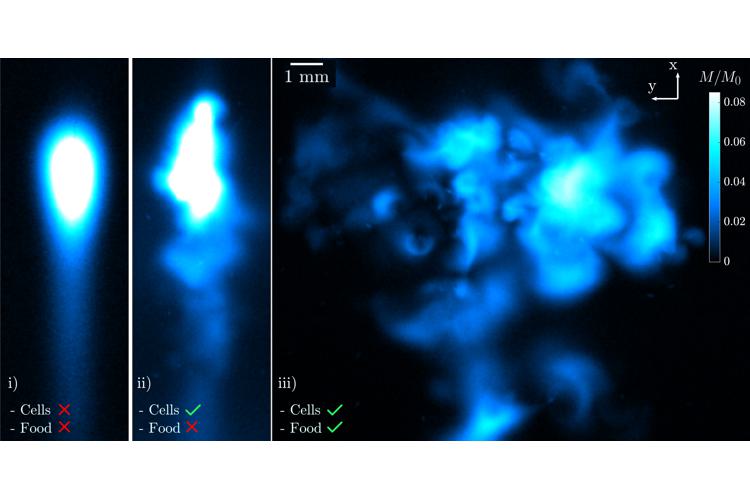- Imprimer
- Partager
- Partager sur Facebook
- Share on X
- Partager sur LinkedIn
Séminaire
Le 31 mars 2025

Régis Turuban (SISSA, Trieste, Italy)
Aquatic microorganisms typically inhabit a heterogeneous resource landscape, composed of localized and transient patches. To effectively exploit these resources, they have evolved a wide range of feeding strategies that combine chemotactic motility with active feeding flows. However, there is a notable lack of experimental studies that examine how these active flows shape resource fields to optimize feeding. In particular, the suspected cooperative hydrodynamics provided by groups of cells remains largely unexplored due to the difficulties in visualizing these dynamic three-dimensional flows. Here, we experimentally investigate Stylonychia lemnae ciliates form feeding clusters of independent cells around food patches. Individual feeding flows interact hydrodynamically to create a chaotic collective flow at the population scale. Using a combination of experimental and numerical techniques, we measure and predict the entire collective flow, enabling us to assess its outstanding mixing and dispersion properties. We show that the active spreading of the food patch accelerates its detection by starving cells. As many additional fitness advantages provided by collective flows can be envisioned, we propose that this feeding cluster represents a form of intra-specific by-product cooperative behavior.
Contact: Nina Javerzat
Date
11:00
Localisation
LIPhy, salle de conférence
- Imprimer
- Partager
- Partager sur Facebook
- Share on X
- Partager sur LinkedIn